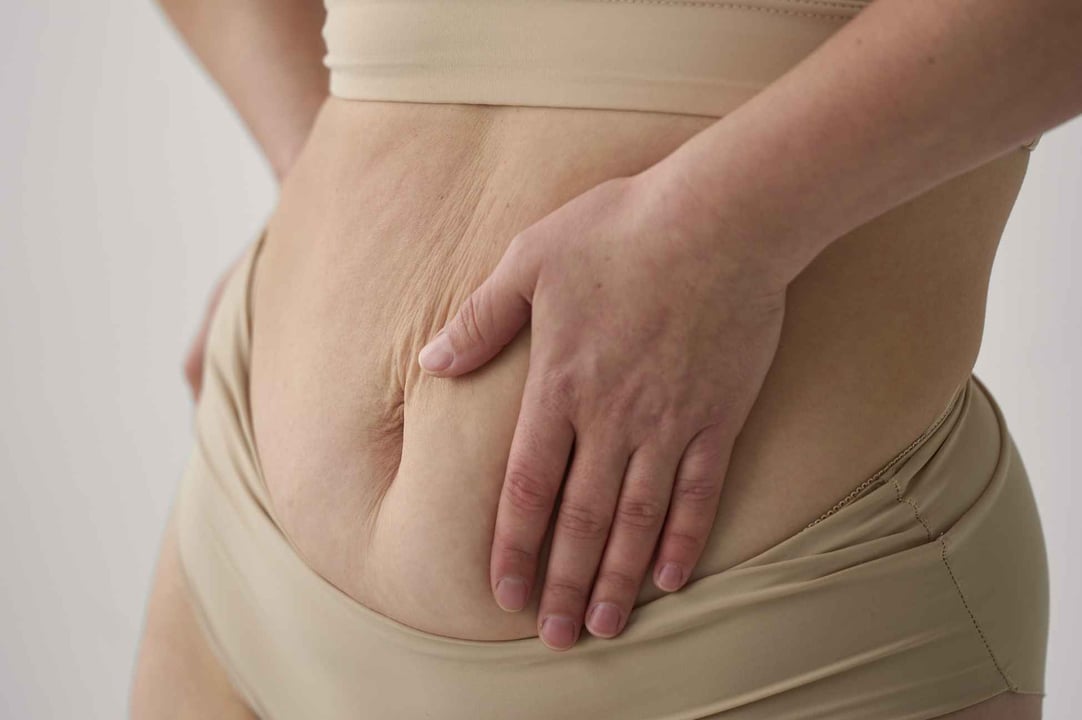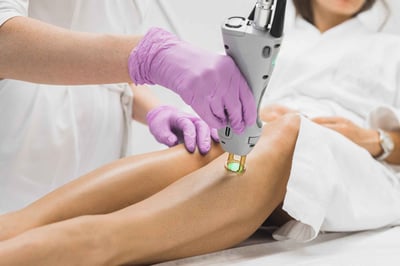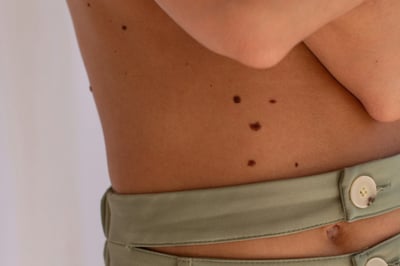Visceral Fat
Excess fat stored inside the abdominal cavity and surrounding the organs is termed as visceral fat. It is also called "hidden" or "deep" fat since it is not visible externally and lies beneath the skin's surface. Accumulation of this type of fat is referred to as visceral obesity and can be detrimental to one's health since it secretes hormones and other substances which can up the risk of chronic illnesses like heart disease, diabetes, and certain kinds of cancer. Additionally, it can cause abdominal obesity, otherwise known as a "beer belly." Eating a balanced diet and performing regular physical activity can help to reduce the chances of developing visceral fat.

What is Visceral Fat
Visceral fat is the type of fat that accumulates around the internal organs in the abdominal cavity, also known as "belly fat." Unlike subcutaneous fat, located directly beneath the skin, visceral fat lies deeper and is more metabolically active. Various factors, including an unhealthy diet, lack of physical activity, hormonal imbalances, and genetics, can cause visceral fat. Excessive caloric intake, especially from sugary and high-fat foods, can lead to weight gain and accumulated belly fat. A sedentary lifestyle can also contribute to the buildup of visceral fat.
Visceral fat can harm the body in several ways. It releases harmful substances into the bloodstream that can contribute to inflammation and increase the risk of chronic conditions such as cardiovascular disease, type II diabetes, and certain cancers. Visceral fat also pressures the organs, impairs their function, and increases the risk of liver disease, digestive problems, and hormonal imbalances. It's important to maintain a healthy body weight, engage in regular physical activity, and eat a nutritious diet to reduce the risk of developing excessive visceral fat. In some cases, targeted exercises such as abdominal strengthening and high-intensity interval training can also help reduce belly fat.
Common Types of Visceral Fat
There are a variety of different kinds of visceral fat that accumulate in the abdominal area and surround the organs inside the body. The different types of fat include perirenal fat, which is situated around the kidneys, and epicardial fat, which is located in the vicinity of the heart. Retroperitoneal fat, which is found behind the peritoneum, and intraperitoneal fat, which is situated within the peritoneum and surrounds the inner organs, are also classified as types of visceral fat. Continue reading to find out more information on the different types of visceral fat.
Epicardial fat
Epicardial fat (EF) is a visceral fat deposit between the heart and the pericardium, which shares many pathophysiological properties with other visceral fat deposits. Epicardial fat (EF) has been proposed as a marker of cardiovascular risk. It also causes local inflammation and likely directly affects coronary atherosclerosis.
Moreover, it has been linked to an increased risk of insulin resistance, and other health problems. Epicardial fat is metabolically active and releases substances that can disrupt normal metabolic processes. Maintaining healthy body weight and regular physical activity is vital to reduce the risk of accumulating harmful epicardial fat. Additionally, a diet low in saturated and trans fats and high in fiber, fruits, and vegetables can help reduce the amount of epicardial fat in the body and improve heart health.
Intraperitoneal fat
Intraperitoneal fat is a type of visceral fat located explicitly within the peritoneal cavity, the space in the abdomen that contains the abdominal organs. This fat consists of posterior pararenal fat laterally and perirenal fat medially. This fat has been linked to an increased risk of several health issues, including metabolic disorders and cardiovascular disease. Unlike subcutaneous fat, found beneath the skin, intraperitoneal fat is more difficult to measure and target through lifestyle changes such as diet and exercise. However, research has shown that reducing overall body fat, mainly through diet and physical activity, can help reduce intraperitoneal fat and improve overall health.
Retroperitoneal fat
Retroperitoneal fat is a type of visceral fat that surrounds the abdominal organs, such as the kidneys and intestines, in the retroperitoneal space (the area in the back of the abdomen behind the peritoneum). It has been linked to several health risks, including insulin resistance, cardiovascular disease, and increased inflammation. Like other types of visceral fat, it is also more metabolically active. It releases harmful substances into the bloodstream, contributing to a higher risk of chronic conditions. Maintaining a healthy weight through diet and physical activity, controlling stress levels, and managing hormonal imbalances, can help reduce the accumulation of retroperitoneal fat and its associated health risks.
What Causes Visceral Fat
A growing belly is the most apparent sign of visceral fat. There are many causes of visceral fat. Genetic and environmental factors primarily determine the amount of visceral fat you accumulate. Maintaining a healthy weight, engaging in physical activity, eating a nutritious diet, and managing stress levels can help reduce the risk of developing excessive visceral fat. Outlined below are the leading causes of visceral fat:
Lack of physical activity
Lack of physical activity is one of the causes of visceral fat. A sedentary lifestyle, combined with an unhealthy diet, can lead to weight gain and the accumulation of belly fat. Regular exercises, such as cardiovascular activities and resistance training, can help maintain a healthy weight and reduce the risk of developing visceral fat and its associated health risks.
Unhealthy diet
Eating an unbalanced diet is another major reason for people to have visceral fat. Taking in too many calories, sugar, and unhealthy fats can lead to an increase in weight and an accumulation of abdominal fat. Processed and fast food are abundant in calories and lack nutrients, which make them important contributors to the formation of visceral fat. To reduce the risk of developing visceral fat and its related health issues, it is important to have a healthy and well-rounded diet and to remain active.
Genetics
Genetics can play a role in the development of visceral fat. Certain genetic factors can make a person more susceptible to weight gain and the accumulation of belly fat, particularly in the abdominal region. However, genetics is only one of several factors that contribute to the development of visceral fat.
Hormonal imbalances
Hormonal imbalances can contribute to the development of visceral fat. Hormonal changes, particularly those associated with menopause, pregnancy, and certain medical conditions, can affect how the body processes and stores fat. Hormonal imbalances can also impact metabolism, making it more difficult to lose weight and reducing the ability of the body to burn fat. Stress, lack of sleep, and certain medications can also affect hormone levels, contributing to the development of visceral fat.
Procedures That Remedy Visceral Fat
The best way to reduce visceral fat is through a combination of diet and physical activity. A diet rich in fruits, vegetables, lean proteins, and whole grains, and low in calories, sugar, and unhealthy fats can help maintain a healthy weight and reduce the risk of developing visceral fat. In severe cases, bariatric surgery may be recommended to remove excess fat from the abdominal region.
Hormone therapy
Hormone therapy can play a vital role in treating visceral fat by regulating hormones that can contribute to its development. Hormonal imbalances, such as high insulin, testosterone, and estrogen levels, can increase the risk of developing visceral fat. Hormone therapy can help regulate these hormones, which can help reduce the risk of developing excessive visceral fat.
However, hormone therapy should only be part of a comprehensive treatment plan that includes lifestyle changes, such as diet and physical activity. Merely relying on hormone therapy alone may not be sufficient to effectively reduce visceral fat, as it is only one aspect of the treatment plan.
Bariatric surgery
Bariatric surgery is a procedure performed on obese individuals to help them achieve substantial and sustained weight loss. Bariatric surgery is emerging as an effective way to alleviate many medical conditions associated with visceral fat.
Visceral fat, located deep within the abdominal cavity, is often associated with an increased risk of developing health problems, such as heart disease, diabetes, and certain types of cancer.
Bariatric surgery can effectively treat visceral fat by reducing the amount of food the individual can consume and altering the digestive process. Some common types of bariatric surgery include:
Gastric bypass surgery
Sleeve gastrectomy
Gastric band and duodenal switch
Medications
Several medications can be used to help treat visceral fat. However, they are typically prescribed in conjunction with lifestyle changes such as diet and physical activity. Some commonly used medications for treating visceral fat include:
Weight loss drugs
These drugs decrease appetite, increase feelings of fullness, or block fat absorption.
Medications for conditions such as insulin resistance and metabolic syndrome
These medications can help regulate metabolism and improve insulin sensitivity, reducing the risk of developing excessive visceral fat.
Frequently Asked Questions
How is visceral fat different from subcutaneous fat?
Visceral fat and subcutaneous fat are two different types of body fat. Visceral fat is located in the abdominal cavity and surrounds the internal organs, such as the liver, pancreas, and intestines. It is often referred to as "deep" or "hidden" fat.
In contrast, subcutaneous fat is located just under the skin and is often referred to as "surface" or "superficial" fat.
The primary difference between these two types of fat lies in their location and effects on the body. Visceral fat is more metabolically active and produces hormones and other substances that can affect the normal functioning of the heart, blood vessels, and other organs. It can increase the risk of developing health problems such as cardiovascular disease, type 2 diabetes, and other metabolic disorders. On the other hand, subcutaneous fat is less metabolically active and primarily funct... Show more.
Can visceral fat be reversed?
Yes, it is possible to reduce and reverse visceral fat accumulation through lifestyle changes and medical treatment, if necessary. Maintaining a healthy lifestyle, including regular physical activity, a balanced diet, and managing stress can stop the visceral fat from coming back. Additionally, medical treatments, such as hormone therapy, bariatric surgery, and non-invasive procedures, can also be effective in reducing visceral fat and improving overall health.
How does alcohol consumption affect visceral fat?
Alcohol consumption has been linked to elevated levels of visceral fat. It is because alcohol contains empty calories high in energy but low in nutrients and can contribute to weight gain and increased body fat. Additionally, alcohol affects the body's metabolism, making it more difficult for the liver to break down and store fat, leading to increased fat accumulation, particularly in the abdominal area.
Excessive alcohol consumption has been linked to several health problems, including liver disease, cardiovascular disease, and type 2 diabetes, which the accumulation of visceral fat can exacerbate.
Can medication or supplements reduce visceral fat?
Researchers recently shared the successful results of a clinical trial on a popular drug often prescribed to aid in weight loss. Adults who are overweight and have an increased risk of cardiovascular disease, due to having visceral or ectopic fat, can benefit from the combination of this drug and a lifestyle change. Yet, the most effective way to reduce visceral fat is to reduce weight through diet and exercise as this type of fat responds better to these measures than to medications.









